Flavor characteristics of Rosa Coffee beans in Milasu Manor, Costa Rica
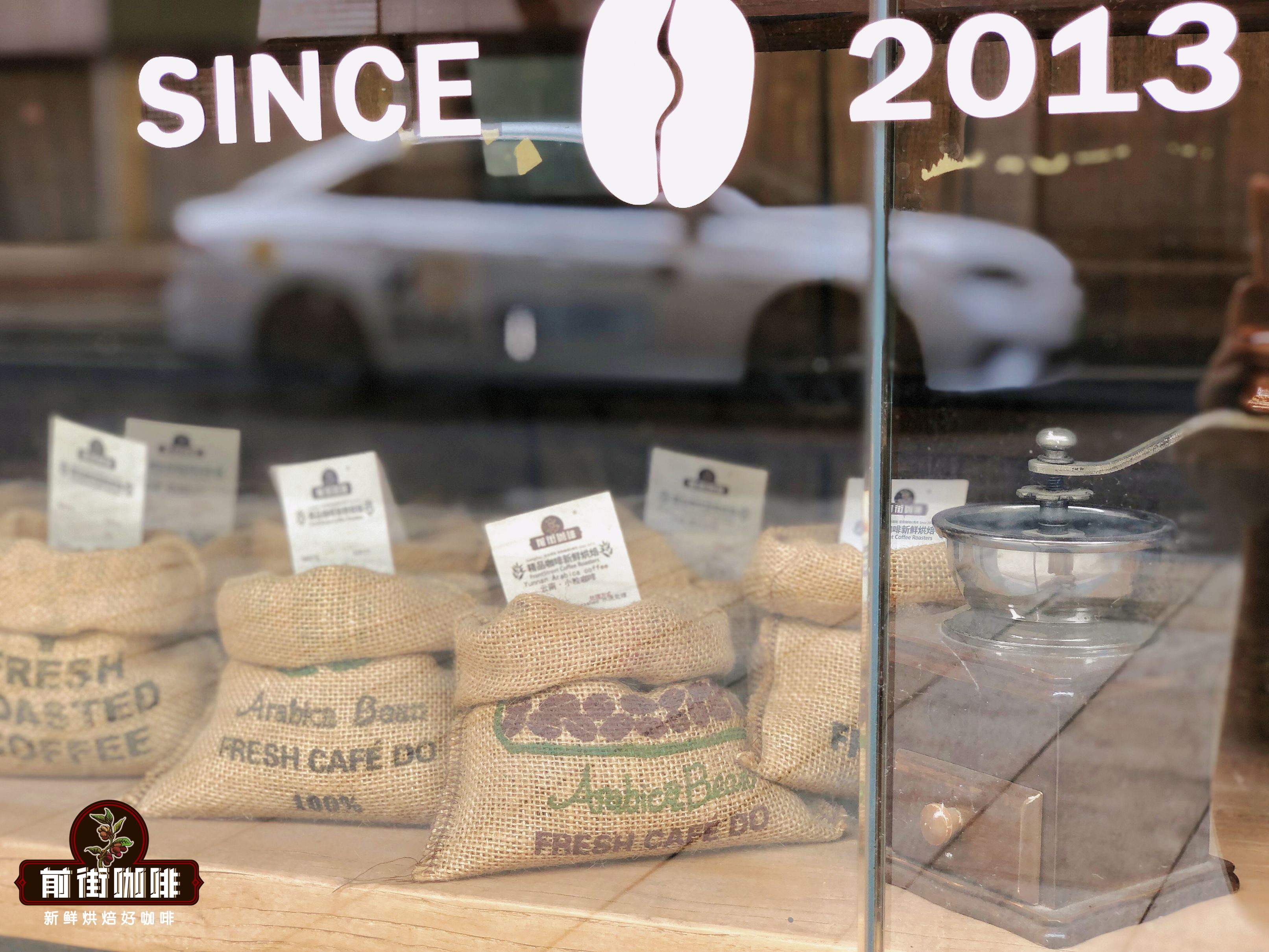
Costa Rican coffee is generally considered to be one of the best flavors in Central and South America. Costa Rican coffee producing area has extremely high altitude, pleasant temperature and fertile soil, which leads to the abundance of high quality Costa Rican coffee beans. It is precisely because of the reputation of Costa Rican coffee that Costa Rican coffee beans have appeared in Starbucks' selection coffee product line.
Arabica coffee varieties are very fragile, but Arabica needs specific climatic conditions to thrive, including high elevations and mild temperatures. In Costa Rica, a charming Latin American country, the mountains and warm temperatures in the growing region provide the perfect environment for growing the highest quality Arabica coffee beans.
Costa Rica has a distinct dry season and rainy season, with temperatures ranging from 17 degrees Celsius to 28 degrees Celsius in a year, with an annual temperature difference of only about 10 degrees Celsius. More than 80 per cent of coffee growing areas are located between 800m and 1600 m, with an average rainfall of between 2000 and 3000 mm.
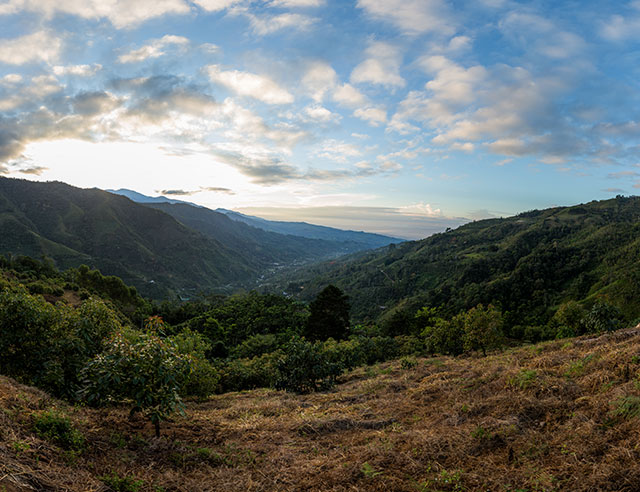
Heavy rainfall and high elevations create an ideal planting environment and amazing mountain scenery for Costa Rica. More than 70% of the coffee grows in these lush forests, and the elevations of these areas vary widely. All these factors affect the aroma, taste, flavor and acidity of Costa Rican coffee from different regions. Volcanic ash enriches the soil, providing oxygen to beans and giving them a richer taste. Diversity and beautiful natural climate make Costa Rica a perfect place to live, travel and grow coffee.
There are eight different coffee growing areas in Costa Rica, each producing beans with its own unique flavor. The different producing areas of Costa Rica have their own diverse climates, as well as a variety of microclimates and extremely high air humidity, which have brought great benefits to the cultivation of different varieties of coffee beans.
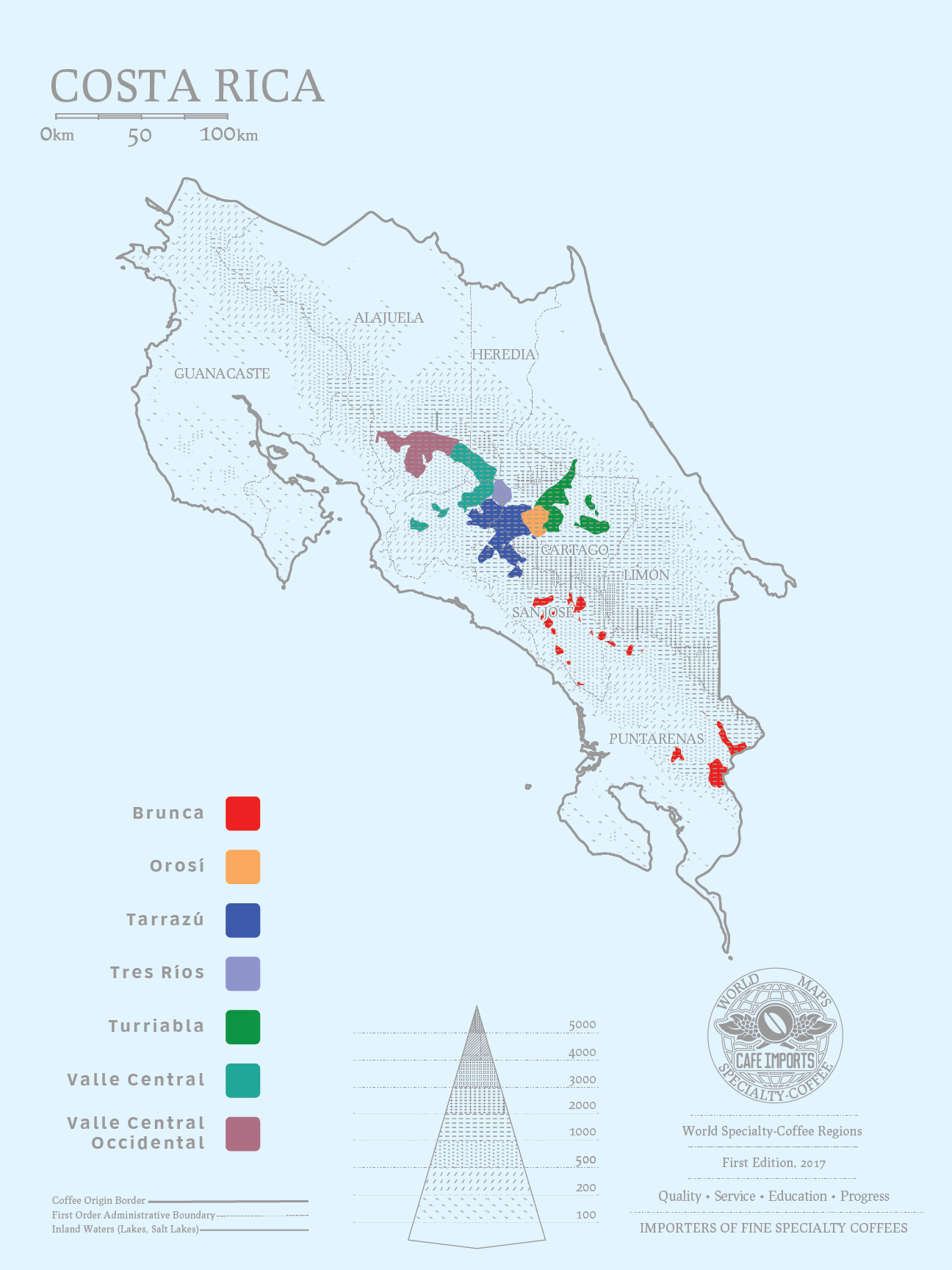
The seven coffee producing areas in Costa Rica include Brenca, Olosi, Tarazu, Sanshui River, Duli Alba, Western Valley and Central Valley.
One of the most famous coffee producing areas in Costa Rica is the Tara Pearl producing area of Costa Rica, where coffee is famous for its sour taste and rich aroma. Brunca has a moderate taste, while Valle Occidental is famous for the subtle peach and apricot flavours of its beans. The diversity of climate and humidity brings different tastes to each region, so you can enjoy Costa Rican coffee in eight different ways.
Costa Rican coffee is as sweet as honey, and Qianjie also wants to recommend a Costa Rican Tara bead coffee bean for everyone to taste. There is a coffee bean from Milasu Manor on the bean list on the front street.
Tarazhu producing area is one of the highest coffee producing areas in Costa rica. the planting soil in Tarazhu producing area is acidic, and most of the coffee plants in the producing area have different plants for shading. The coffee beans in Tara Zhu producing area are beautiful in appearance and blue and green in color. Due to the high altitude of planting here, the disease of coffee trees has been greatly suppressed, coffee trees are able to devote more energy to the growth of coffee fruits, and nearly 95% of the coffee beans produced here are of extremely hard grade (SHB grade). Tara Zhu coffee flavor tends to citrus acid, preserved fruit sweet, chocolate main tone.

Qianjie Coffee Milasu Manor, Costa Rica
Producing area: Tarazhu producing area of Costa Rica
Manor: Milasu Manor
Altitude: 1700 m
Varieties: Rosa, ET47, SL28, Maico
Treatment method: raisin honey treatment
Esteban Sanches, the owner of Milasu Manor, was originally a staff member of La Candelilla, and he is very experienced in the post-processing of coffee machines and raw coffee beans. Later, because of his unique view of coffee, he came out of the small Candle Manor and built a coffee farm, which was not named Mirazu. In the local language, Mirazu means overlooking Tarazu. Esteban Sanches, the owner of Milasu Manor, believes that the quality of coffee begins with coffee trees.
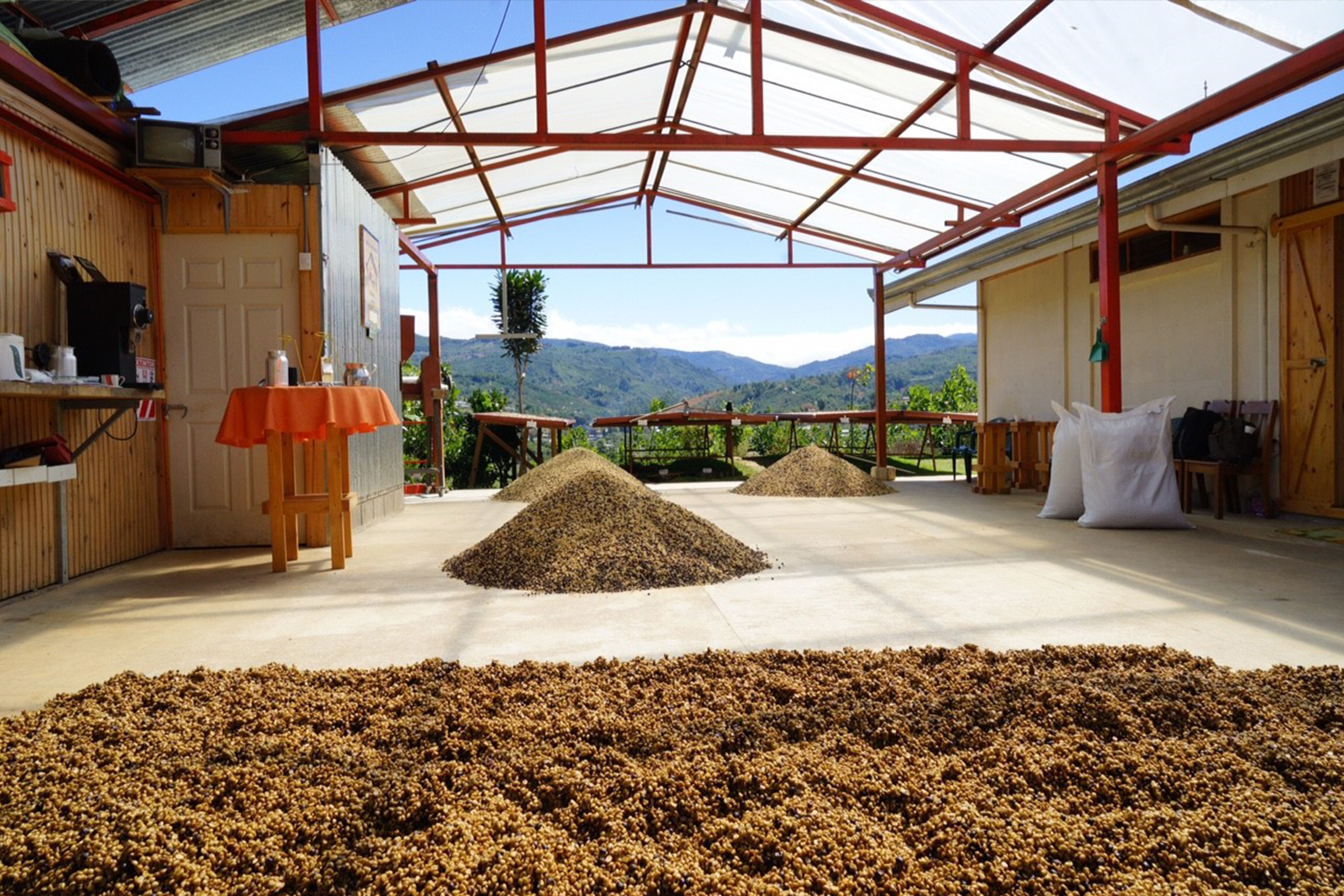
The Milasu coffee beans on the front street are treated with grape dried honey, drying the ripe coffee cherries to a dried state, removing the peel and pulp and retaining all the pectin layer, and then drying. Qianjie found that coffee treated with raisin honey has a thicker taste, more persistent aroma and stronger sweetness than ordinary honey-treated coffee.
When receiving the raw beans of this coffee, the baristas of Qianjie Coffee took into account the strong fruity and floral aromas of the coffee treated with raisin honey, as well as a strong sense of sweetness, so the roasters of Qianjie Coffee roasted this coffee beans to a moderate degree. After receiving the roasted beans, the baristas of Qianjie coffee decided to brew the beans with a higher water temperature (93 degrees Celsius) and a finer grinding degree (80% of the Chinese standard No. 20 sieve pass rate).
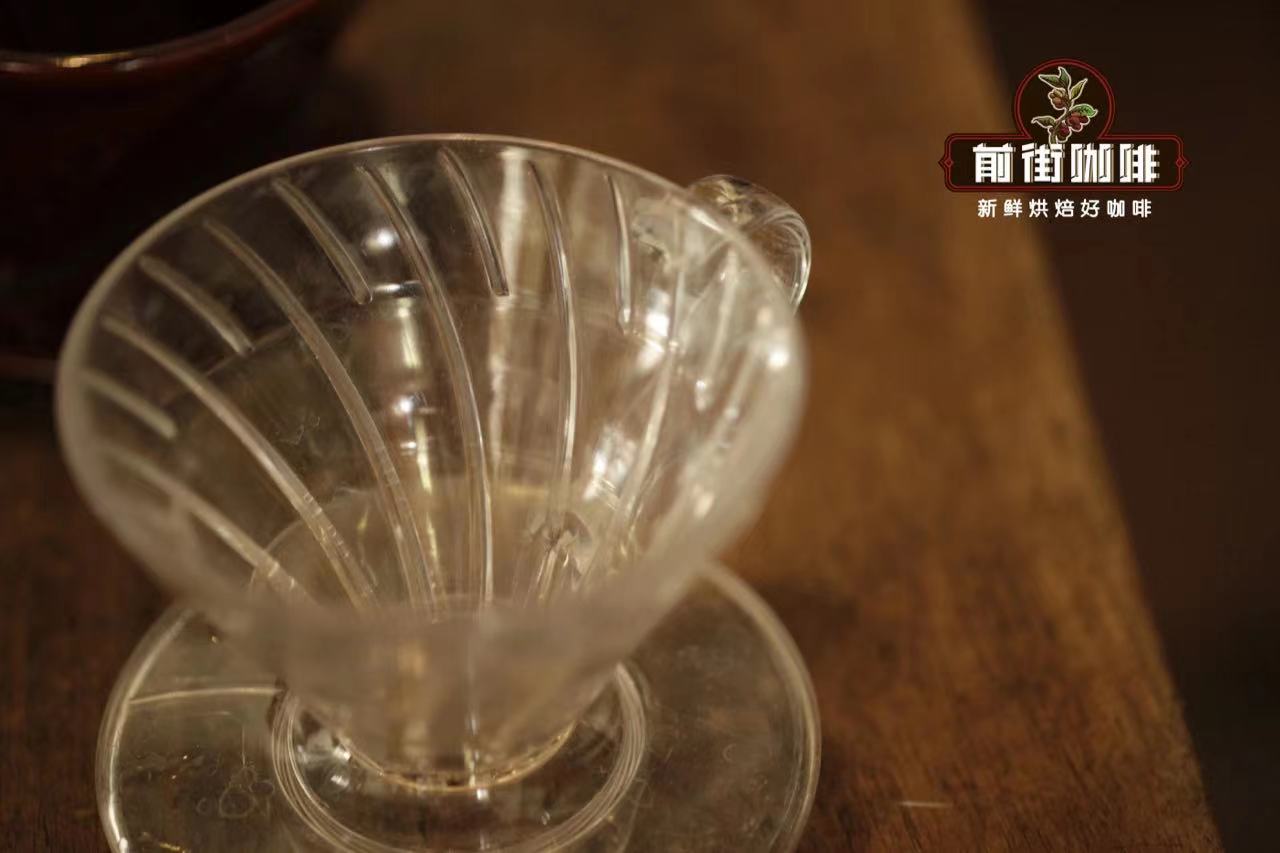
Friends who often read the article about Qianjie Coffee know that there are two kinds of filter cups of town store treasure, Hario V60 and KONO filter cups. If the water temperature used for cooking is high, the Hario V60 filter cup with fast flow rate will be used in order to avoid over-extraction caused by too long contact between hot water and coffee powder. In addition, in order to give the coffee a richer sense of hierarchy, three-stage water injection will be used when brewing.
Filter cup: Hario V60
Water temperature: 93 degrees Celsius
Amount of powder: 15g
Ratio of powder to water: 1:15
Degree of grinding: the pass rate of Chinese standard No. 20 screen is 80%.
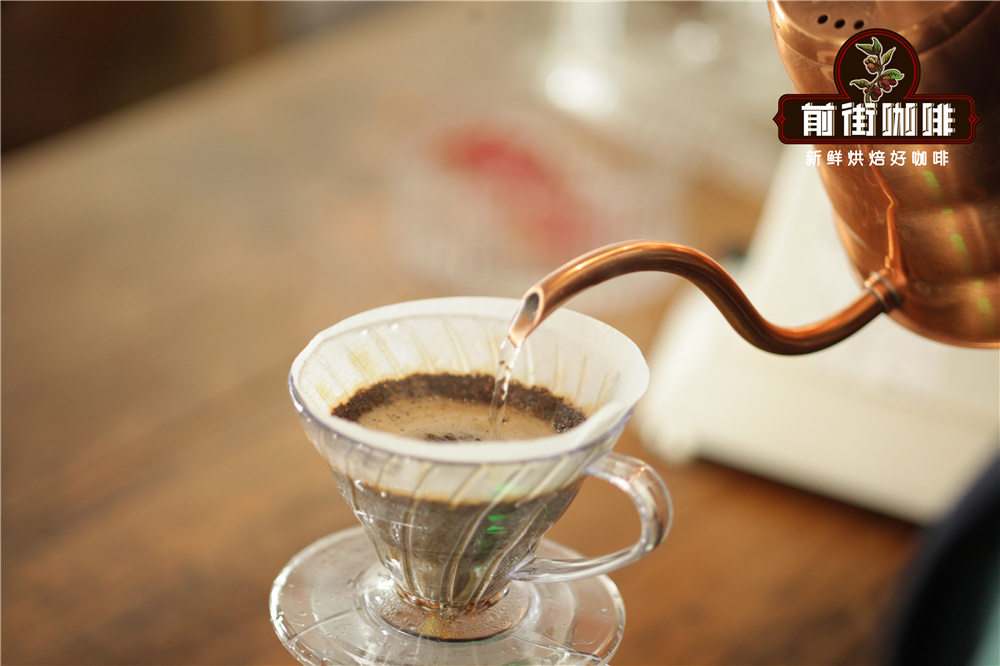
First steam the coffee powder with 30 grams of water for 30 seconds, then slowly circle the second section of water to 125 grams for segmentation. when the water level in the filter cup drops to see the powder bed, gently circle the third section of hot water to 225 grams. Wait for the water in the filter cup to drop completely into the sharing pot below, and then remove the filter cup. The total extraction time is about 2 minutes.
For more information about coffee beans, please follow the coffee workshop (Wechat official account cafe_style) and exchange professional coffee knowledge. Please add Wechat account kaixinguoguo0925.
Important Notice :
前街咖啡 FrontStreet Coffee has moved to new addredd:
FrontStreet Coffee Address: 315,Donghua East Road,GuangZhou
Tel:020 38364473
- Prev
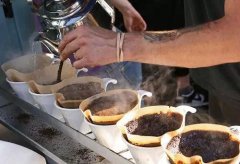
Flavor characteristics of coffee beans treated with Costa Rican Tara Zhubaha raisin honey
Costa Rica Talazhubach wine strawberry flavor raisin honey treatment this year, Baja imported a total of 3 batches, this batch is the best bean condition of 3 batches of coffee production areas: Tarrazu annual rainfall: 1300 mm classification standard: SHB coffee varieties: Yellow Catuai annual temperature: 20 degrees treatment method: black honey treatment raw beans specifications: 14-17 mesh planting altitude: 1980
- Next
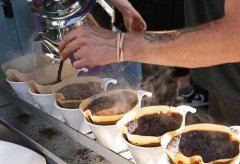
Java Nica Manor Santa Rita Manor in Nicaragua Flavor Coffee Bean Flavor and Taste
Professional barista exchanges please follow the coffee workshop (Wechat official account cafe_style) Nicaragua RFA Santa Rita Javanica Nicaraguan Rainforest Union certified Santa Rainforest Manor Java flavor description: dry fragrance for Central American Java species unique charming vanilla flavor with flowers and lemon peel, as well as fresh blueberry and peach fragrance, into
Related
- Detailed explanation of Jadeite planting Land in Panamanian Jadeite Manor introduction to the grading system of Jadeite competitive bidding, Red bid, Green bid and Rose Summer
- Story of Coffee planting in Brenka region of Costa Rica Stonehenge Manor anaerobic heavy honey treatment of flavor mouth
- What's on the barrel of Blue Mountain Coffee beans?
- Can American coffee also pull flowers? How to use hot American style to pull out a good-looking pattern?
- Can you make a cold extract with coffee beans? What is the right proportion for cold-extracted coffee formula?
- Indonesian PWN Gold Mandrine Coffee Origin Features Flavor How to Chong? Mandolin coffee is American.
- A brief introduction to the flavor characteristics of Brazilian yellow bourbon coffee beans
- What is the effect of different water quality on the flavor of cold-extracted coffee? What kind of water is best for brewing coffee?
- Why do you think of Rose Summer whenever you mention Panamanian coffee?
- Introduction to the characteristics of authentic blue mountain coffee bean producing areas? What is the CIB Coffee Authority in Jamaica?

